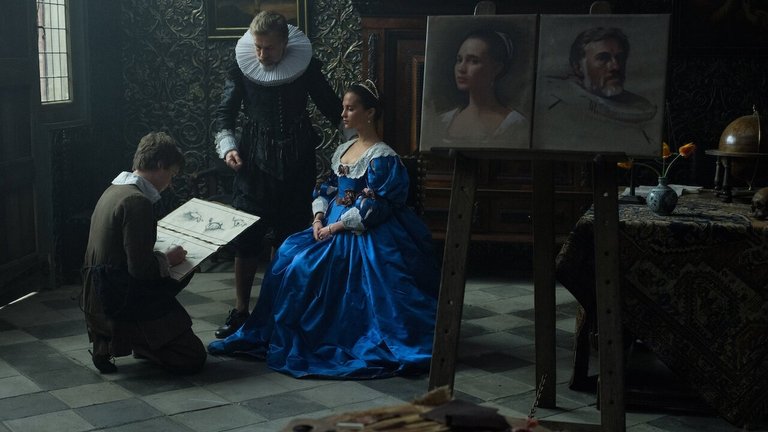Film Review: Tulip Fever (2017)

"Whenever cryptocurrencies’ price crashes or experiences a downward trend, this represents an opportunity for mainstream sceptical “nocoiner” economists to once again declare the phenomenon a “bubble.” For those who still don’t understand the term “bubble,” mainstream media will provide a detailed explanation—describing it as some banal and bizarre commodity that, due to stock market speculation and mass frenzy, gains an astronomical price and experiences steady value growth beyond any sound basis, before the laws of economic gravity step in to orchestrate an even steeper, more spectacular crash, leaving the masses who invested in it hoping to get rich without hard work, bereft. One of the oldest and most famous phenomena of this type is the so-called tulip mania in the Netherlands during the first half of the 17th century, which served as the basis for the 2017 film Tulip Fever.
The film is based on Deborah Moggach’s novel, adapted into a screenplay by the renowned Tom Stoppard. The plot unfolds during the period when the Dutch Republic, after achieving independence in a prolonged war against Spain, enjoyed the status of Europe’s most enlightened and liberal state—one enriched by trade and emerging capitalism into an unprecedented degree of wealth—a wealth reflected, among other things, in the rare and exotic tulips becoming a new status symbol. Wealthy merchant Cornelis Sandvoort (Christoph Waltz), however, faces other problems. While he has accumulated extraordinary wealth, the death of his spouse and child means he has no one to leave it to. To this end, he brings a young and beautiful Sophia (Alicia Vikander) from an orphanage and makes her his new wife. Despite the extraordinary efforts Cornelis invests in her, she cannot bear him an heir. Compounding this, she becomes deeply infatuated with Jan van Loos (Dane DeHaan), a poor but talented young painter whom Cornelis has hired to paint a family portrait. Meanwhile, Sophia’s maid, Maria (Holliday Grainger), faces far graver issues, as her lover Willem (Jack O’Connell) has vanished, leaving her pregnant. Jan, convinced that painting alone won’t make ends meet, attempts rapid enrichment through tulip trading. In the meantime, the two women in the Sandvoorts’ household devise a devious plan to assist one another.
While the title suggests a historical epic to recount the fascinating events of a relatively distant past—one that is, ironically, quite relevant to the modern world—Tulip Fever barely engages with economics, reducing the entire tulip narrative to a farcical game of naïve losers gambling in taverns posing as stock exchanges. The screenplay focuses far more on melodrama, particularly the love triangle between the Sandvoorts and the young artist, which, especially in the latter half, descends into a farcical tone that’s somewhat endearing but ultimately unoriginal and unremarkable. The entire tulip saga—of rapid wealth, speculation, and market collapse—is merely a pretext for a routine costumed melodrama akin to The Other Boleyn Girl, which Justin Chadwick directed in 2008. A better example of what the film was supposed to be about is the infamous Shakespeare in Love, a similar mix of melodrama and farce that Harvey Weinstein peddled nearly two decades ago as an Oscar-bait contrivance, where the story of Shakespeare was more propelled by stellar performances than a banal script.
In this regard, however, Tulip Fever falls far short of Weinstein’s standards. Ever-reliable Christoph Waltz appears to have a good time, transforming a character who would conventionally be a villain into a sympathetic gentleman. Alicia Vikander also tries, but due to the script’s banality, she often overacts, and viewers—at least those inclined to notice such things—will likely remember her more for a few nude scenes than for her performance. But the greatest disappointment is Dane DeHaan, who increasingly resembles a young Leonardo DiCaprio and seems to be reenacting his most famous role from Titanic. This wouldn’t be so problematic if the film had either spectacular special effects or, more crucially, some “chemistry” akin to that between DiCaprio and Winslet in Titanic. Here, however, there is none of that, leaving only a routine trudge toward a predictable happy ending, where even the greatest market crash in history is reduced to a handful of deflated characters in a tavern, and the narrative claims that the government—like in similar events four centuries later—had to rein in overzealous capitalists. Those watching today’s headlines about the cryptocurrency “bubbles” collapsing might say that little was learnt from this historical episode. Those watching this film would say its creators learnt even less."
RATING: 3/10 (+)
(Note: The text in the original Croatian version is available here.)
Blog in Croatian https://draxblog.com
Blog in English https://draxreview.wordpress.com/
InLeo blog https://inleo.io/@drax.leo
LeoDex: https://leodex.io/?ref=drax
Hiveonboard: https://hiveonboard.com?ref=drax
InLeo: https://inleo.io/signup?referral=drax.leo
Rising Star game: https://www.risingstargame.com?referrer=drax
1Inch: https://1inch.exchange/#/r/0x83823d8CCB74F828148258BB4457642124b1328e
BTC donations: 1EWxiMiP6iiG9rger3NuUSd6HByaxQWafG
ETH donations: 0xB305F144323b99e6f8b1d66f5D7DE78B498C32A7
BCH donations: qpvxw0jax79lhmvlgcldkzpqanf03r9cjv8y6gtmk9